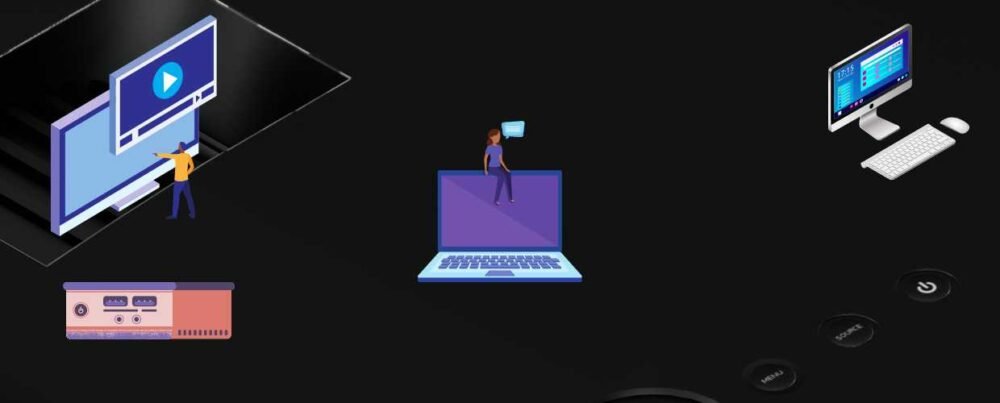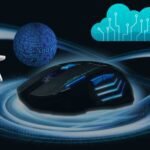In today’s fast-paced world, where computing technology continues to evolve, Mini PCs have emerged as innovative solutions that offer a blend of performance, compactness, and versatility. This comprehensive exploration delves into the essence of Mini PCs, tracing their evolution, elucidating their core features, and highlighting their diverse applications that cater to the needs of both personal users and businesses alike.
Mini PC Redefining Computing in a Compact Form
The Mini PC represents a paradigm shift in how we perceive computing devices. It packs powerful hardware components into a compact form factor, redefining the traditional desktop computing experience. With its condensed design, the Mini PC delivers impressive computing capabilities without compromising performance or functionality. As technology advances, the Mini PC exemplifies the trend toward more efficient and space-saving solutions that cater to modern lifestyles and workplaces.
Key Features and Versatility
The Mini PC boasts a variety of key features that contribute to its growing popularity.
Compact Size
The most distinguishing feature of a Mini PC is its size. These devices are significantly smaller than traditional desktop computers, making them ideal for space-constrained environments such as small offices, living rooms, and even classrooms. Their diminutive stature allows users to set up computing workstations in areas where larger systems might be impractical.
Performance
Despite their small footprint, Mini PCs often pack a punch in terms of performance. Equipped with modern processors, ample RAM, and storage options, they can handle a wide range of tasks, from everyday productivity to multimedia and light gaming. This amalgamation of power and size challenges the notion that high-performance computing requires bulky hardware.
Portability
The compact size of Mini PCs extends to their portability. They are lightweight and easy to carry, making them great options for users who need computing power on the go, such as business travelers or students. This mobility ensures that users can access their digital workspaces regardless of location.
Connectivity
Mini PCs come with a variety of connectivity options, including USB ports, HDMI outputs, audio jacks, and networking capabilities. This connectivity ensures that users can easily connect peripherals, displays, and network devices. These diverse connection options enable Mini PCs to function as versatile hubs for various devices and applications.
Diverse Applications of Mini PCs
The versatility of Mini PCs lends itself to numerous applications across different sectors.
Home Entertainment
In the realm of home entertainment, Mini PCs serve as compact media centers, capable of streaming content, playing high-definition videos, and running home theater applications. They transform the living room into an entertainment hub, providing access to a wide range of multimedia content.
Office Productivity
Businesses benefit from Mini PCs as they provide reliable computing power for everyday office tasks, presentations, and even light content creation. Their small form factor also allows for clutter-free workspaces, contributing to efficient and organized work environments.
Digital Signage
In commercial settings, Mini PCs power digital signage displays that deliver dynamic and engaging content to customers. Their compact size and reliability make them a preferred choice for such applications, ensuring that advertising and informational content are delivered seamlessly.
Education
Mini PCs find their place in educational institutions, offering students and educators a compact computing solution for learning and teaching activities. They are also ideal for setting up educational kiosks and interactive displays, enhancing the learning experience.
Benefits and Considerations
Mini PCs offer a host of benefits while addressing specific considerations.
Benefits
Their small size and portability make Mini PCs perfect for users who value space efficiency and mobility. They consume less power than traditional desktops, contributing to energy savings and reduced utility costs. Additionally, their efficient design often results in quieter operation, enhancing user experience.
Considerations
Due to their compact design, Mini PCs may have limitations when it comes to upgradability and customization. High-performance applications or heavy gaming might not be well-suited for certain models, as the compact form factor may impose thermal constraints.
Innovations and Future Prospects
Mini PCs are primed for further innovations.
Enhanced Performance
As technology continues to advance, Mini PCs are likely to incorporate even more powerful processors and improved graphics capabilities, expanding their potential applications. This evolution will empower Mini PCs to handle more demanding tasks while maintaining their small form factor.
Modularity
Future Mini PC designs might incorporate modular components that allow users to upgrade or replace specific hardware components easily, providing a balance between compactness and upgradability. This modularity will enable users to adapt their Mini PCs to evolving computing needs.
Conclusion: Power in a Compact Package
The Mini PC is a testament to the ingenuity of modern computing, where size no longer dictates performance. Its compact design, impressive capabilities, and adaptability cater to various computing needs across personal, business, and entertainment domains. As technology continues to evolve, Mini PCs stand as a shining example of how innovation can redefine the computing landscape, packing power and functionality into a compact package that fits seamlessly into our increasingly connected lives. In a world where space is a premium and mobility is essential, Mini PCs embody the ethos of efficiency without compromise, offering users a new perspective on what computing can be.












